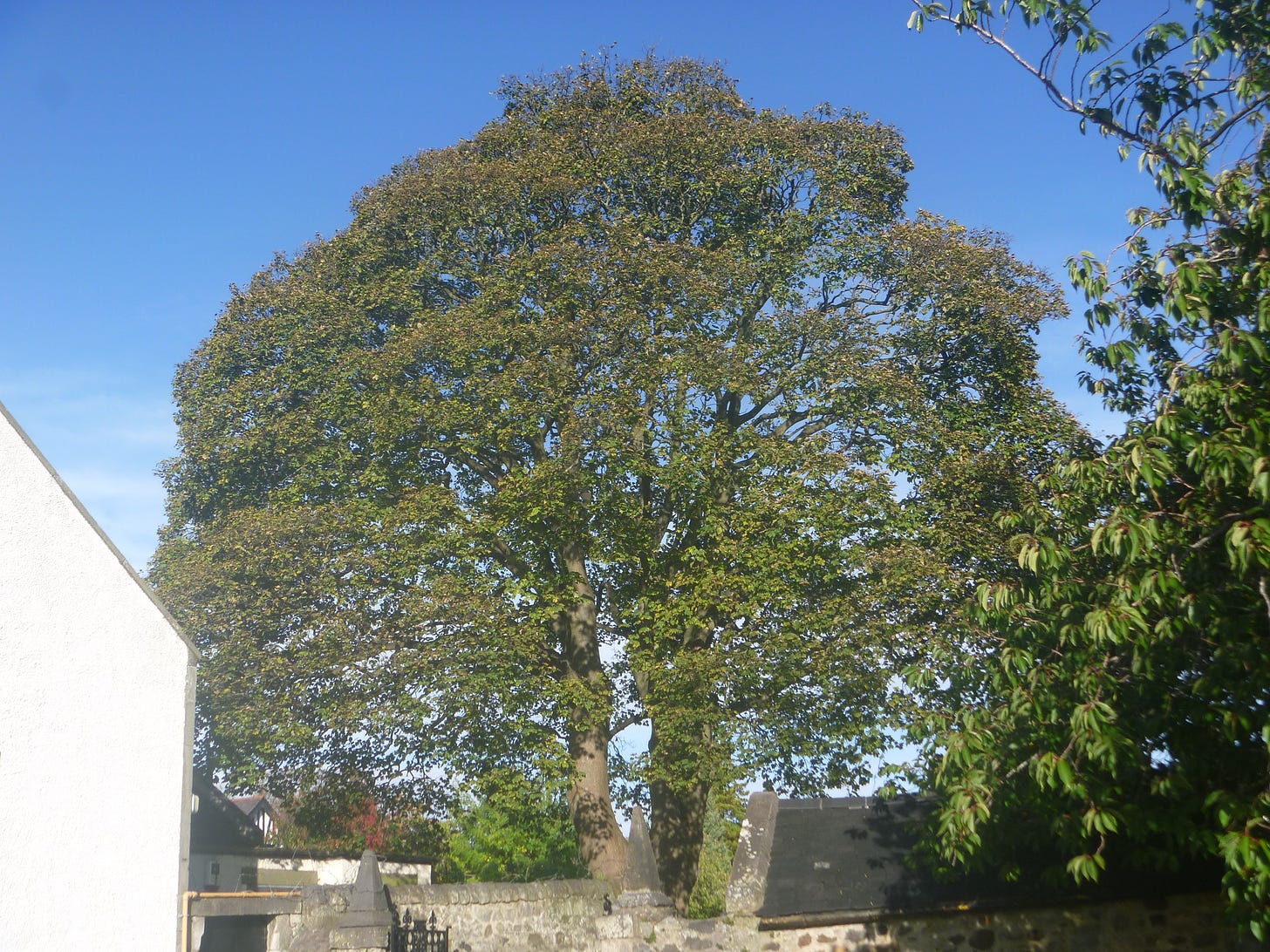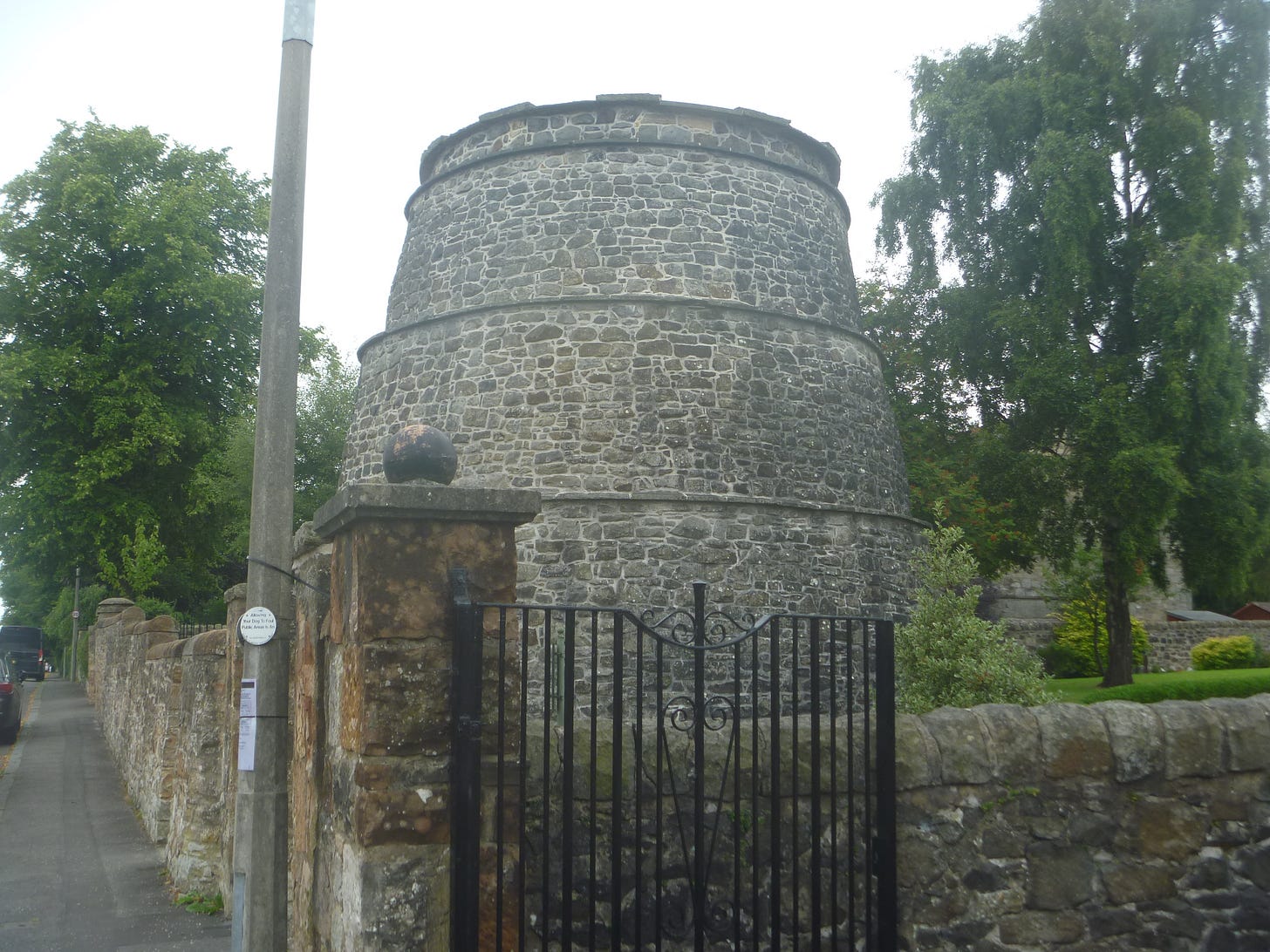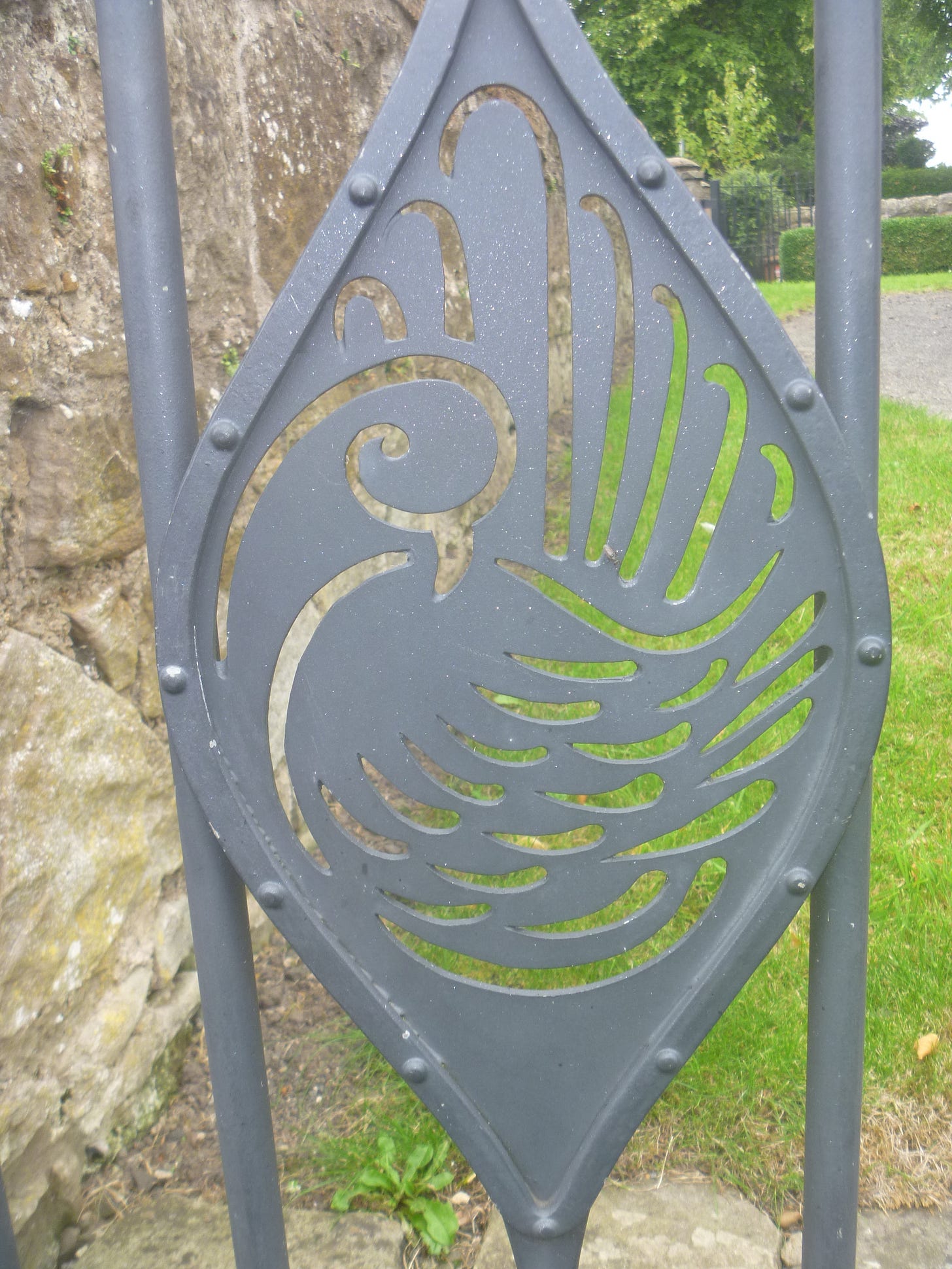In last week's post about the wildlife of Edinburgh's kirkyards and cemeteries, I mentioned the Corstorphine Sycamore and that tree is worth a whole post to itself.
The Corstorphine Sycamore is a variety of Sycamore, Acer pseudoplatanus var. corstorphinensis, that originated in the Corstorphine area of Edinburgh in 1600. It sets leaf early and has very bright golden foliage in the Spring. The original Corstorphine Sycamore, which grew near the doocot (dovecot) in Corstorphine, was badly damaged by a storm in 1998, but there are other examples around Edinburgh, including one in Grange Cemetery and this beauty in Corstorphine Parish Kirkyard
The subspecies does not produce seeds and can only be propagated from cuttings, which is what has happened since the storm of 1998, to ensure that the Corstorphine Sycamore can exist into the future.
The original Corstorphine Sycamore played its part in local history, in a story that has become a legend and a ghost story and thus is retold with several variations. The historical facts are that Christian Nimmo was hung for the murder of James, Lord Forrester of Corstorphine in 1679. The two had been lovers, who met in secret at the Corstorphine doocot, which still stands today and is well looked after as you can see in the photo below.
Legend has it that Nimmo then haunted the Corstorphine Sycamore that, at the time, stood next to the doocot. She became famous as the White Lady of Corstorphine and is commemorated in the name of the White Lady Pub on Corstorphine Road. You can read a version of her story on the Eerie Edinburgh website (though here the sycamore has become an oak tree!) and you can read some historical context in this Wikipedia article about the Forresters.
The dovecot was built in the 1500s and contains over 1,000 sandstone nest-boxes for pigeons that were bred to provide meat and eggs through the winter. It is the last remaining remnant of Corstorphine Castle, which was demolished in the late eighteenth century. Although it isn’t possible to go inside the dovecot these days, a nicely maintained path allows you to walk right round it. A lovely dove decorates one of the entrance gates.
When the original Corstorphine Sycamore was blown down in the storm of 1998, a violin maker used the wood to make an instrument to memorialise the tree. The story inspired me to write this poem several years ago:
Corstorphine Sycamore by Juliet Wilson
The Lord of Corstorphine, a drunken philanderer
neglected the family estates,
flew into a rage and attacked his love
with a sword that she wrested from him.
She killed him and fled
but was caught and hung
dressed in a hood of white.
White Lady wailing, haunted Corstorphine’s sycamore,
blood on the blade of the sword
with which she had slain her lord.
She wailed with the wind on Boxing Day Night,
the night of the terrible storm.
Four hundred years of tree and ghost
brought to a splintering end.
There was no treasure at the roots of the tree
but the wood was dried and preserved.
In the hands of a craftsman, the legend restored
took the shape of a violin.
On moonlit nights, when the fiddler plays
the white lady wails once more
and the sycamore lives again.
**
What I’m Watching
The Island, the story of the island of Ireland’s epic geological journey, spanning 1.8 billion years. (This programme is on the BBC i-player, and is only available in the UK.)
What I’m Reading
Wildwood by Roger Deakin, a series of essays about trees and woodlands.
An Interesting Event
How to Draw Stag Beetles is the latest in the series of online Wildlife Drawing classes, happening on 5 September. I’ve attended a previous Wildlife Drawing Class, on How to Draw Water Voles, which was very enjoyable. Forthcoming events are listed on the Wildlife Drawing website.
What's happening in Nature?
Western European population of Turtle Doves up 25% following temporary hunting ban https://rspb.org.uk/media-centre/western-european-population-of-turtle-doves-up
What effect is the changing climate having on insect's colours and how might this affect their reproduction https://www.theguardian.com/environment/article/2024/jul/13/climate-insect-colours-sex-lives-study
Are all night street lights making trees inedible for insects? https://www.theguardian.com/environment/article/2024/aug/05/all-night-streetlights-make-leaves-inedible-to-insects-study-finds
Almost 500 chemicals found in England’s rivers and groundwater https://www.theguardian.com/environment/article/2024/aug/06/almost-500-chemicals-found-in-englands-rivers-and-groundwater







Hope you're enjoying Wildwood. It's one of my favourite books.